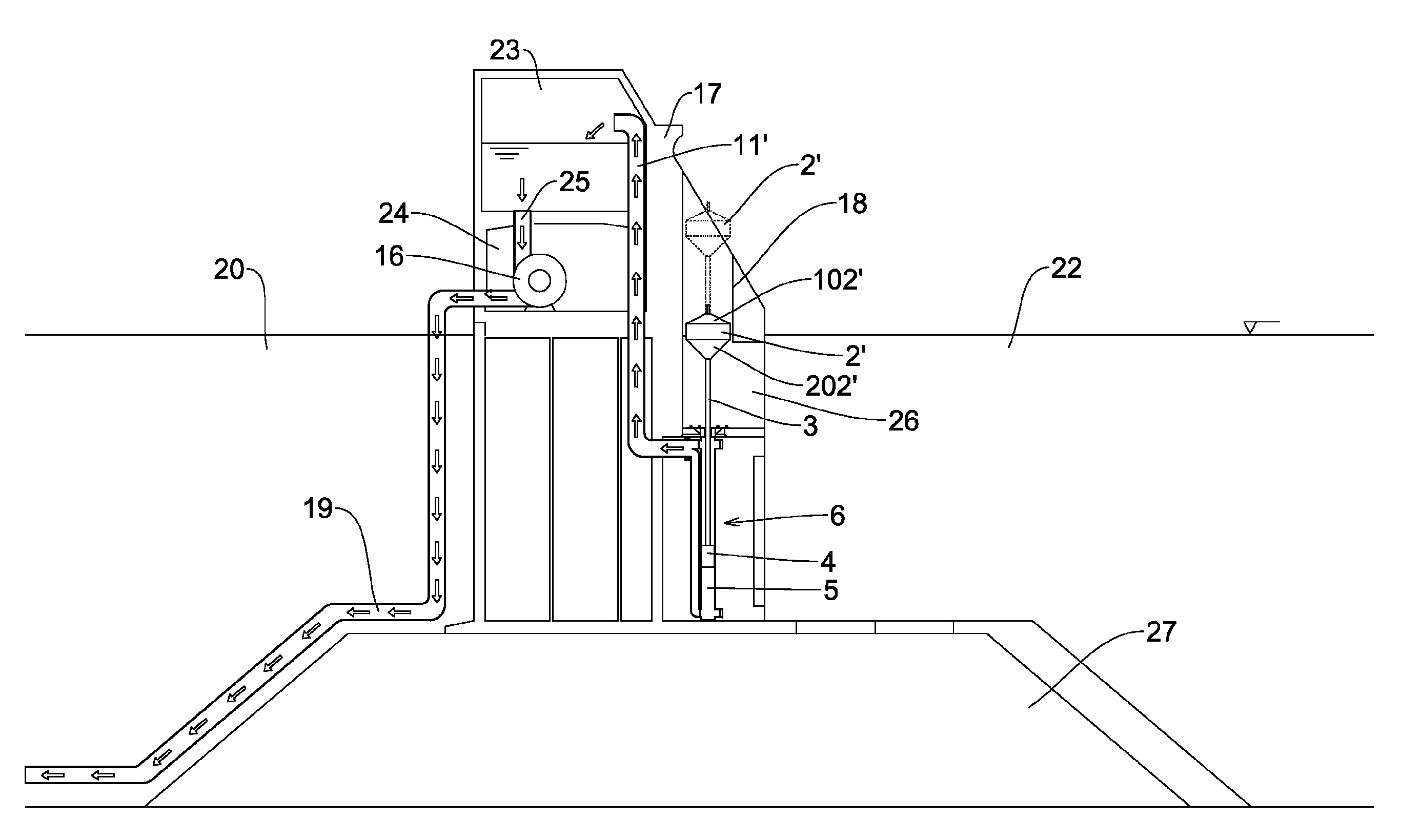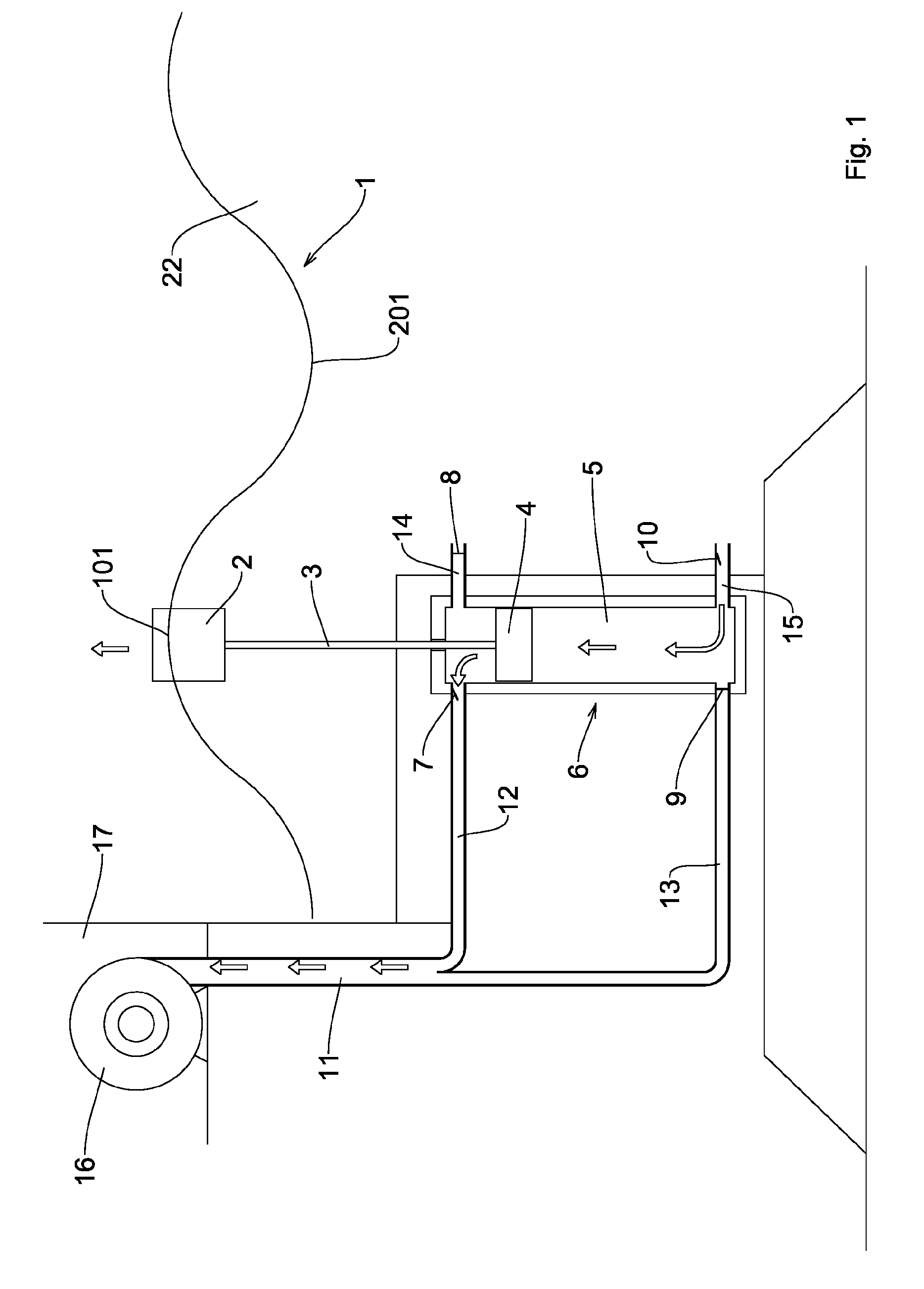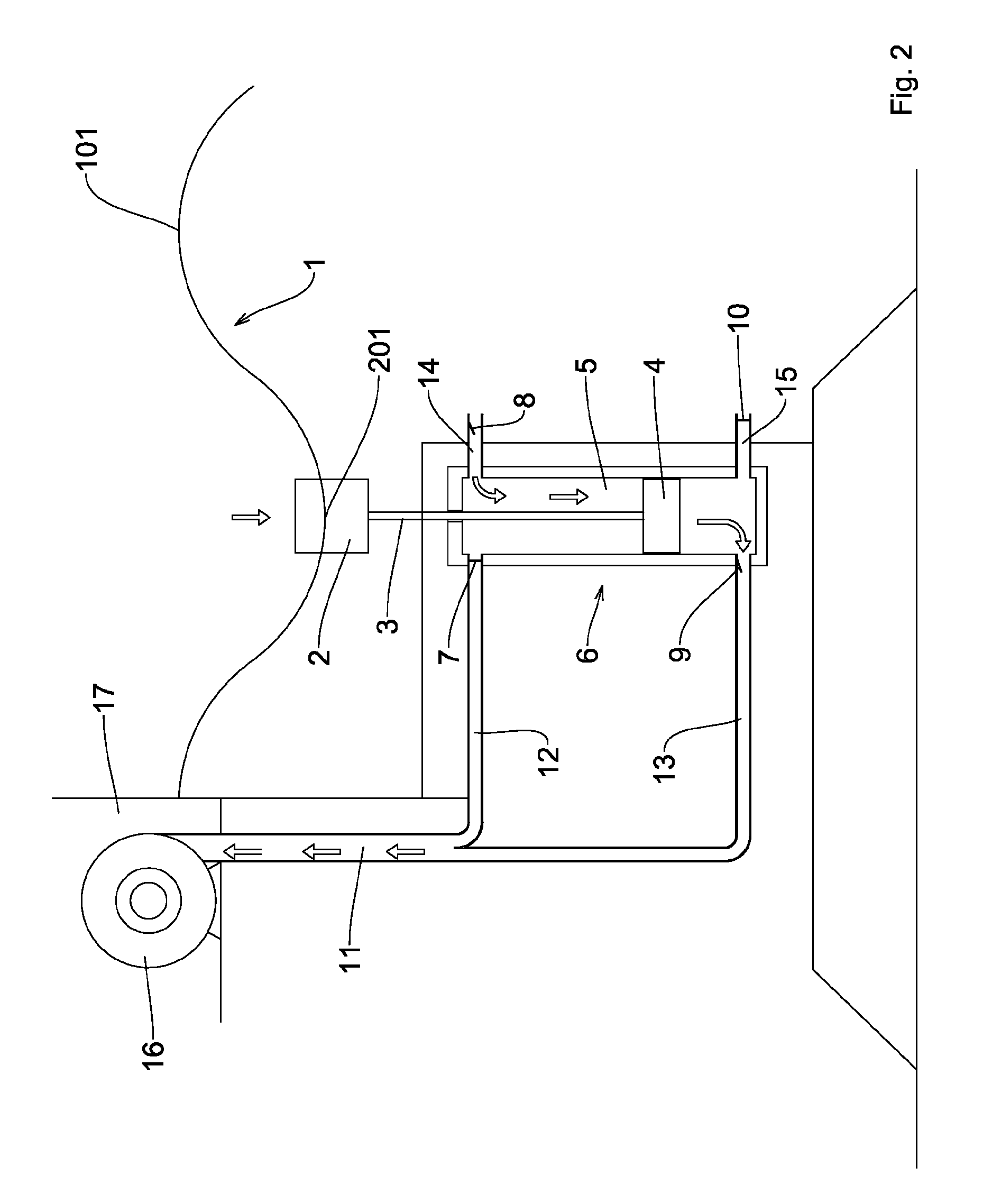Plant for the production of electric power from the movement of waves
a technology of electric power and plant, which is applied in the direction of water power plants, sea energy generation, couplings, etc., can solve the problems of unsatisfactory efficiency and very complex production of plants, and achieve the effect of optimal operating efficiency
- Summary
- Abstract
- Description
- Claims
- Application Information
AI Technical Summary
Benefits of technology
Problems solved by technology
Method used
Image
Examples
first embodiment
[0015]In the figure, the float 2 of the present plant, according to this first embodiment of the invention, is situated at the top of a crest 101 of the sea wave 1: the piston 4, joined to this float 2 by means of the rod 3, will have therefore performed a movement from the bottom upwards inside the cylinder 5 in order to reach the position shown, causing opening of the valve 10 which allows the entry of a certain amount of water through the duct 15 inside this cylinder 5 into the zone underneath this piston 4. After completion of the rising movement of the float 2 as far as the crest 101 of the wave 1, and therefore the piston 4 into the vicinity of the cylinder 5, the descending movement of this float will start, as can be seen in FIG. 2 of the accompanying drawings, until it reaches the trough 201 of this wave 1. During the downward movement the float 2 will push the piston 4 downwards so that it reaches, in the region of the trough 201 of the wave 1, a position close to the bott...
second embodiment
[0017]FIG. 3 shows the present plant. In this case the offshore dam 17 comprises a seat 18, which is preferably cylindrical, inside which the float 2′ may slide, said float, as can be seen, having an upper section 102′ and a lower section 202′ which are substantially conical or frustoconical, so as to facilitate the upward and downward movement thereof, also in the case of sea waves of smaller amplitude. Underneath this float 2′, the offshore dam 17 has, formed therein, an expansion chamber 21 for the incoming sea wave, which communicates with the section 22 of seawater outside the offshore dam 17 and is provided with a suitable water inlet opening situated above the hydraulic pump 6. As can be seen, the hydraulic pump 6 is similar to that shown in the previous embodiment, while the duct 11 conveys the water delivered by this pump 6 to the turbine 16 and from here to a further recirculation duct 19. The water used in the turbine 16 enters into this recirculation duct 19 and may be u...
PUM
 Login to View More
Login to View More Abstract
Description
Claims
Application Information
 Login to View More
Login to View More - R&D
- Intellectual Property
- Life Sciences
- Materials
- Tech Scout
- Unparalleled Data Quality
- Higher Quality Content
- 60% Fewer Hallucinations
Browse by: Latest US Patents, China's latest patents, Technical Efficacy Thesaurus, Application Domain, Technology Topic, Popular Technical Reports.
© 2025 PatSnap. All rights reserved.Legal|Privacy policy|Modern Slavery Act Transparency Statement|Sitemap|About US| Contact US: help@patsnap.com



